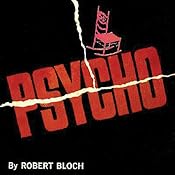We've got some big news to announce today: After a year's hiatus, Hard Case Crime will be returning to bookstores with new titles in 2011.
As you know, our relationship with Dorchester Publishing (Hard Case Crime's publisher since the line's launch in 2004) came to an end a few months ago when Dorchester announced it was getting out of the business of publishing mass-market paperback books. This left Hard Case Crime without a home. I've spent the past six weeks in meetings with other publishers interested in giving us a new home, and I was gratified to receive offers from five of the firms we met with. They were all firms I respect greatly and would have enjoyed working with, but in the end, one stood out as clearly the best match, and that was UK-based
Titan Publishing.
Based in London, Titan is a publisher both of fiction and of gorgeous art books focusing on pop culture such as movie poster art, pin-ups, newspaper comic strips, and Golden Age comic books. They have worked with filmmakers such as J.J. Abrams,
Joss Whedon, and George Lucas. Titan has been around for 30 years, has more than 200 employees, and in addition to publishing books also has a magazine division, a retail division (Titan owns the famous Forbidden Planet bookstore in London, and until recently co-owned the Murder One mystery bookstore with Maxim Jakubowski), and a merchandise division that produces items such as T-shirts, sculptures, and accessories. It's fun to imagine what sorts of cool Hard Case Crime products we might create with them!
But first things first: books.
Titan plans to acquire all existing stock of Hard Case Crime's backlist from Dorchester Publishing and to resume shipping these titles to booksellers immediately. Hard Case Crime will relaunch in September/October 2011 with four new books, including two you've heard about before —
Choke Hold by Christa Faust (sequel to her Edgar Award-nominated
Money Shot) and
Quarry's Ex by Max Allan Collins (the latest in the popular series of hit man novels by the author of
Road to Perdition), both of which were in the works at Dorchester but never got published — and two you haven't heard about, never-before-published novels by major writers in the field (MWA Grand Masters, names to be announced shortly).
You'll be hearing more about all four books over the coming months, I promise. In the meantime, if you'd like a little taste of
Quarry's Ex and
Choke Hold, you can see their cover art and read a sample chapter from each at our
Web site.
(Why so long a wait? It has to do with the sales cycle in the book publishing business. Titan's sales force is already selling July/August 2011 titles to stores now; September/October 2011 is the soonest we can get new books out if we want to have enough time for booksellers to consider and order them, and then for Titan to print and ship them, etc.)
We will also still be going ahead with our
special hardcover "double" volume with Subterranean Press, featuring two long-lost Lawrence Block novels [
69 Barrow Street and Strange Embrace — Ed.] bound back-to-back. More info on that one as soon as we have a firm publication date and cover art to to show you!
In other news,
Haven, the SyFy television series inspired by one of our books (
The Colorado Kid by Stephen King), just completed its first season and has been renewed for a second. If you haven't seen the show or only caught the first few episodes, I'd encourage you to give it a(nother) try — it got really good by the end of the season (and no, I'm not just saying that because I wrote the penultimate episode and came up with the story for one before that...). It's a little different from what you see in our books, since every story contains elements of the supernatural — but it's still a show about a FBI agent, a cop, and a criminal, and features some awfully hard cases....
Also: Universal Pictures acquired the rights to two other Hard Case Crime books —
Little Girl Lost and
Songs of Innocence by my close personal friend Richard Aleas — and has attached a director (Jonathan Levine,
The Wackness) and screenwriter (Michael Bacall,
Scott Pilgrim vs. the World) to the project. No guarantee that a movie will actually get made, of course, but it's a very exciting first step.
What else is new? Well, Hard Case Crime's sister line,
The Adventures of Gabriel Hunt, is staying with Dorchester for the time being, and they have plans to reissue all of those books — including the sixth, which never came out in mass-market paperback — in the larger "trade paperback" format (as well as e-book format). If everything goes as planned, those should start coming next year. If you poke around online, you can also find an audiobook edition of one book in the series,
Hunt Through the Cradle of Fear, produced by AudioRealms. If there's ever been a genre suited to audiobook adaptation, it's tales of adventure! (If you don't feel like hunting for it — pun intended —
here's a link.)
That's all the news this time around. There will be more, probably fairly soon -- you'll certainly be hearing from me well before this time next year, when the new books come out. But in the meantime, I want to thank you for all your patience and your support. It's great to know you're out there, as passionate about our books as ever. I promise: We'll give you some good scratching for your itch just as soon as we can.
New books will be published in paperback (possibly some in hardcover as well!); ebook editions will also be released across multiple platforms. Titan is distributed in the U.S. and Canada by Random House.
We're very excited about working with Titan (indeed, we had offers from five publishers and chose Titan over several that were much larger and better-known) -- they love pulp fiction as much as we do and appreciate that in books like ours the visual dimension is just as important as the storytelling. It's hard to imagine a better home for Hard Case Crime.
Best,
Charles
Official press release:
Hard Case Crime Returns!
Titan Books to Relaunch Acclaimed Pulp Paperback Series
New York, NY; London, UK (October 19, 2010) — Titan Books and series creator Charles Ardai announced today that they are teaming up to relaunch the popular Hard Case Crime series of paperback crime novels. Nominated five times in five years for the Edgar Allan Poe award, the mystery genre’s highest honor, Hard Case Crime has published such luminaries as
Stephen King (the book that was the basis for the new TV series
Haven),
Mickey Spillane,
Ed McBain,
Donald E. Westlake,
Lawrence Block,
Pete Hamill,
Max Allan Collins,
Madison Smartt Bell and
Roger Zelazny, to name just a few. Each book features new cover art in the classic pulp style, including covers painted by
Robert McGinnis, the legendary illustrator who painted the original James Bond movie posters.
Hard Case Crime has won praise from dozens of major publications ranging from
Time,
Newsweek and
The Atlantic Monthly to
Entertainment Weekly,
Playboy, and
Reader’s Digest, and has been featured on
CBS Sunday Morning, NPR’s
Fresh Air, and in every major newspaper in America (including repeated coverage in the
New York Times,
Los Angeles Times,
Washington Post, and
USA Today).
First launched in 2004, Hard Case Crime published 66 titles through August 2010, at which time its long-time publisher, Dorchester Publishing, announced it was exiting the mass market paperback publishing business after nearly 40 years. After receiving offers from five other publishers (including two of the largest in the world) to continue the line, Charles Ardai selected UK-based Titan Publishing as Hard Case Crime’s new home.
“Titan has an extraordinary record of creating beautiful, exciting books with exactly the pop culture sensibility that Hard Case Crime exists to celebrate,” said Charles Ardai, founder and editor of Hard Case Crime and an Edgar Award-winning mystery writer himself. “Titan is one of the few publishers that loves pulp fiction as much as we do.”
Titan’s first new Hard Case Crime titles, scheduled to come out in September and October 2011, include
Quarry's Ex, a new installment in the popular series of hit man novels by
Road to Perdition creator Max Allan Collins;
Choke Hold, Christa Faust’s sequel to her Edgar Award-nominated Hard Case Crime novel
Money Shot; and two never-before-published novels by major authors in the crime genre (both recipients of the Grand Master Award from the Mystery Writers of America).
Additionally, Titan plans to acquire all existing stock of Hard Case Crime’s backlist titles from Dorchester Publishing and resume shipping those titles to stores immediately.
“Hard Case Crime has done a remarkable job in a very short time of building a brand known for outstanding crime fiction and stunning artwork,” said Nick Landau, Publisher of Titan Books and CEO of the Titan Publishing Group. “We are thrilled to partner with Charles and look forward to bringing Hard Case Crime to a wider audience around the world, not only through the novels themselves but also through an innovative merchandise program.”
For more information, call Hard Case Crime on 646-205-2181 or e-mail media@hardcasecrime.com; call Titan (US media) on 914-788-1005 or email ktc2000@aol.com; or call Titan (UK media) on +44 (0)20 7803 1906 or email sophie.calder@titanemail.com.
About Hard Case Crime
Charles Ardai founded Hard Case Crime in 2004 through Winterfall LLC, a privately owned media company responsible for a variety of print, film, and television projects. The series has been nominated for and/or won numerous awards since its inception including the Edgar, the Shamus, the Anthony, the Barry, and the Spinetingler Award. The series’ bestselling title of all time,
The Colorado Kid by Stephen King, was the basis for the current SyFy television series
Haven, on which Charles Ardai works as a writer and producer. There have also been a number of feature film deals involving Hard Case Crime books, including
The Last Lullaby, based on
The Last Quarry by Max Allan Collins and starring Tom Sizemore as the titular hit man, and more recently Universal Pictures’ purchase of the film rights to
Little Girl Lost and
Songs of Innocence by Richard Aleas.
About Titan Publishing Group
Titan Publishing Group is an independently owned publishing company, established in 1981. The company is based at offices in London, but operates worldwide, with sales and distribution in the US & Canada being handled by Random House. Titan Publishing Group has three divisions: Titan Books, Titan Magazines/Comics and Titan Merchandise. In addition to fiction, including novelizations of films such as
Terminator Salvation, original novels based on TV shows such as
Primeval and
Supernatural and the popular computer game
Runescape, and the celebrated
Further Adventures of Sherlock Holmes series of novels launched in 2009, Titan Books also publishes an extensive line of media- and pop culture-related non-fiction, graphic novels, art and music books.


































 "It takes some time, but if you do it often enough, finally people will get the hang of it, and get familiar with it, and they’ll like it. Then you go on producing a consistent product and you’ll have a market for it. Because the consumer of books or plays, including myself, very reasonably wants to know or have some idea in advance what the book or the play is going to be like.
"It takes some time, but if you do it often enough, finally people will get the hang of it, and get familiar with it, and they’ll like it. Then you go on producing a consistent product and you’ll have a market for it. Because the consumer of books or plays, including myself, very reasonably wants to know or have some idea in advance what the book or the play is going to be like. 









